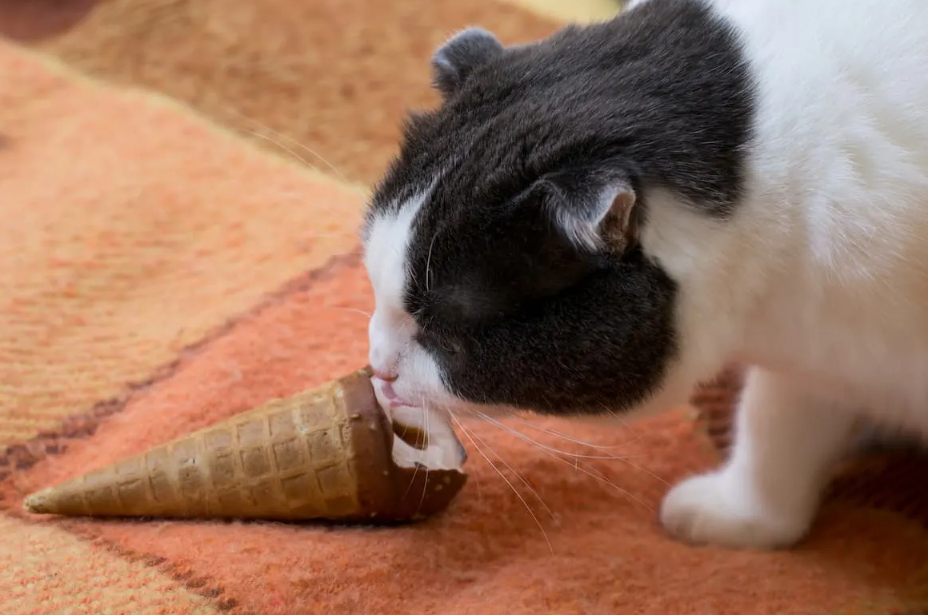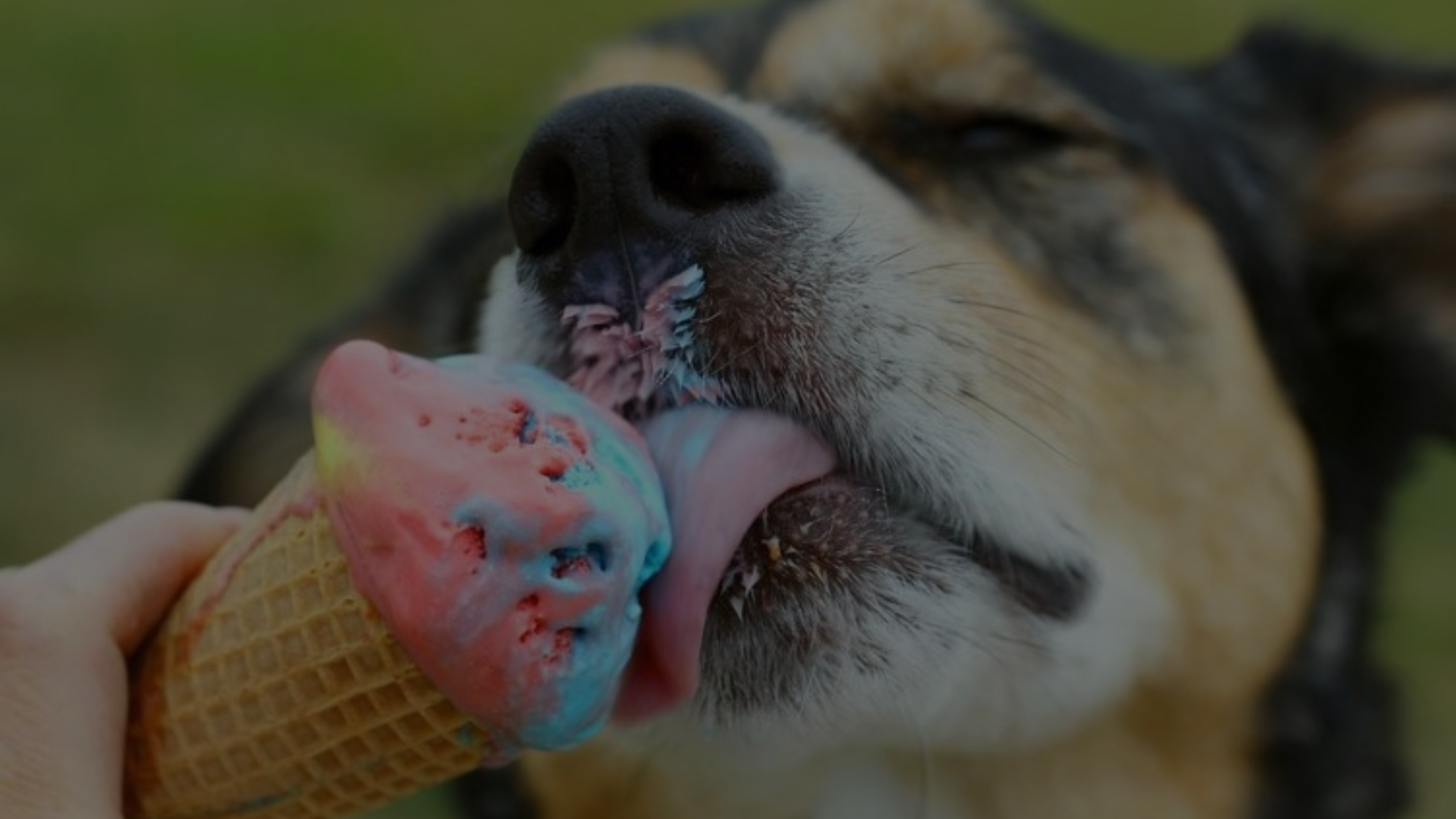For cat owners, sharing sweet treats with our furry companions brings immense joy. But when it comes to dog ice cream, the question arises: Can cats have dog ice cream? While dog ice cream might seem harmless compared to regular ice cream, the answer isn’t straightforward. Let’s delve into the facts and explore safe alternatives to ensure your kitty enjoys delicious yet responsible indulgences.
Why Regular Ice Cream is a No-Go for Cats?
Traditional ice cream poses multiple risks for cats due to:
- Lactose Intolerance: Most adult cats lack the enzyme lactase needed to digest milk sugar (lactose), leading to digestive upset, vomiting, and diarrhea.
- High Sugar Content: Excessive sugar intake can contribute to feline obesity, diabetes, and dental problems.
- Toxic Ingredients: Chocolate, xylitol (an artificial sweetener), and certain fruits commonly found in ice cream are hazardous to cats.

Can Cats Have Dog Ice Cream?
Dog ice cream generally avoids harmful ingredients like chocolate and xylitol. However, it’s still not a perfect fit for cats due to:
- Similar Concerns: Dog ice cream often shares high sugar and fat content with regular ice cream, potentially causing weight gain and health issues.
- Incomplete Information: Labels might not disclose all ingredients, leaving room for unknown risks.
- Nutritional Imbalance: Formulated for dogs, it might not address cats’ specific dietary needs.
Healthy Alternatives for Cats
Spoiling your cat doesn’t have to involve sugary treats. Opt for these safer and more suitable alternatives:
- Cat-Safe Ice Cream: Specially formulated frozen treats catering to cats’ dietary needs with lactose-free milk and natural ingredients. Choose brands with transparency in labeling and minimal added sugar.
- Frozen Tuna or Cat Soups: Blend tuna or other wet cat food with water and freeze in ice cube trays or popsicle molds. These homemade popsicles offer hydration and enrichment, satisfying their curiosity while staying healthy.
- Frozen Yogurt Drops: Mix plain, unsweetened yogurt with a dollop of tuna or salmon mousse. Freeze in small portions for a protein-rich, refreshing treat.
- Frozen Fruits and Vegetables: Offer frozen blueberries, raspberries, or chopped green beans as occasional snacks. Freeze in water or cat broth for added hydration and variety.

Remember, moderation is key. These treats should be occasional indulgences, not a dietary staple. Consult your veterinarian for personalized recommendations based on your cat’s specific needs and any health conditions.
Additional Tips for Feline Happiness
Beyond delicious treats, focus on enriching your cat’s life through these practices:
- Interactive Play: Engage your cat in regular play sessions with feather wands, laser pointers, or puzzle toys to stimulate their hunting instincts and prevent boredom.
- Enrichment Activities: Create a stimulating environment with scratching posts, perches, climbing structures, and hiding spots to satisfy their natural behaviors.
- Quality Food and Hydration: Prioritize a high-quality, cat-specific diet and ensure access to fresh, clean water throughout the day.
- Regular Vet Checkups: Schedule annual checkups with your veterinarian to monitor your cat’s health and ensure they’re thriving.
By understanding the risks of dog ice cream for cats and choosing healthy alternatives, you can offer your furry companion delightful and responsible ways to satisfy their sweet tooth while prioritizing their well-being. Remember, a happy and healthy kitty is a rewarding companion, and responsible indulgence plays a part in maintaining that bond.

Resources & References
FAQs About Cats and Dog Ice Cream
Can I share a lick of my dog’s ice cream with my cat?
It’s best to avoid it. Even a small amount of dog ice cream could disrupt your cat’s digestion due to lactose intolerance or high sugar content. Opt for cat-safe alternatives specifically formulated for their dietary needs.
Are there any cat-safe brands of dog ice cream?
While some dog ice cream brands might advertise lactose-free options, proceed with caution. Not all dog ice cream is created equal, and even “lactose-free” variants might contain hidden ingredients unsuitable for cats. Choose dedicated cat-safe frozen treats for peace of mind.
What are the symptoms if my cat ingests dog ice cream?
Upset stomach, vomiting, diarrhea, and lethargy are common signs. If you suspect your cat has eaten dog ice cream, monitor them closely and contact your veterinarian if symptoms worsen or persist.
Are there any other alternatives to cat-safe ice cream?
Yes! Get creative with frozen treats like:
- Frozen tuna or cat soup popsicles: Blend and freeze for a protein-rich, hydrating delight.
- Frozen yogurt drops: Mix unsweetened yogurt with tuna or salmon mousse for a creamy treat.
- Frozen fruits and veggies: Offer blueberries, raspberries, or chopped green beans as occasional snacks.
Can I make homemade cat-safe ice cream?
Absolutely! Use lactose-free milk, cat-friendly fruits like bananas or mangoes, and minimal added sugar. Research recipes specifically designed for cats to ensure balanced nutrition.







